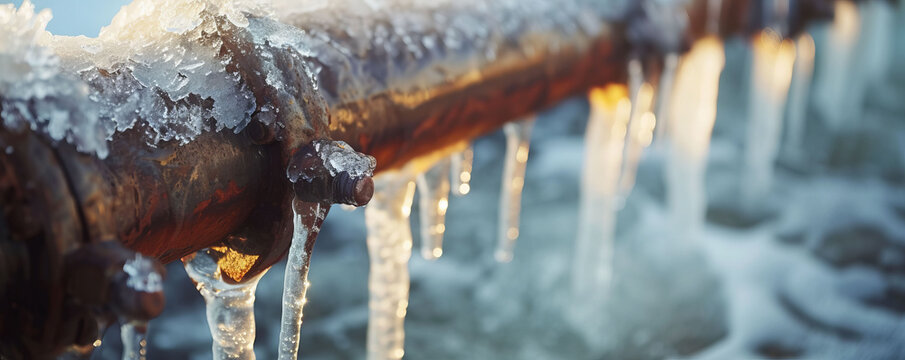How to Avoid Frozen Plumbing in Cold Weather: Pro Guidance
How to Avoid Frozen Plumbing in Cold Weather: Pro Guidance
Blog Article
The content which follows pertaining to How to prepare your home plumbing for winter weather is extremely captivating. Have a go and make your own conclusions.

Winter can wreak havoc on your plumbing, specifically by freezing pipelines. Right here's exactly how to stop it from taking place and what to do if it does.
Intro
As temperatures decline, the danger of frozen pipes boosts, possibly causing pricey repair services and water damages. Comprehending just how to prevent icy pipelines is critical for house owners in cold environments.
Understanding Frozen Pipes
What triggers pipelines to ice up?
Pipelines ice up when exposed to temperatures below 32 ° F (0 ° C) for extended durations. As water inside the pipelines ices up, it expands, taxing the pipeline wall surfaces and possibly causing them to rupture.
Threats and damages
Icy pipelines can lead to supply of water disruptions, property damages, and pricey repair services. Ruptured pipelines can flood homes and trigger extensive structural damages.
Indications of Frozen Water Lines
Recognizing icy pipelines early can avoid them from breaking.
Just how to identify frozen pipelines
Search for reduced water flow from taps, uncommon odors or sounds from pipelines, and visible frost on revealed pipes.
Prevention Tips
Protecting susceptible pipes
Wrap pipelines in insulation sleeves or use warm tape to shield them from freezing temperatures. Focus on pipes in unheated or external locations of the home.
Home heating strategies
Keep indoor spaces properly heated, especially locations with plumbing. Open up cupboard doors to permit warm air to distribute around pipes under sinks.
Safeguarding Exterior Plumbing
Yard hoses and outside taps
Separate and drain garden hose pipes prior to winter season. Install frost-proof faucets or cover outside faucets with insulated caps.
What to Do If Your Pipes Freeze
Immediate activities to take
If you believe icy pipelines, maintain taps open to soothe stress as the ice thaws. Use a hairdryer or towels taken in warm water to thaw pipelines slowly.
Long-Term Solutions
Structural changes
Think about rerouting pipelines away from outside wall surfaces or unheated locations. Add extra insulation to attics, cellars, and crawl spaces.
Upgrading insulation
Invest in top quality insulation for pipelines, attics, and walls. Appropriate insulation assists keep constant temperatures and reduces the danger of icy pipelines.
Conclusion
Avoiding frozen pipes calls for proactive procedures and fast responses. By comprehending the causes, indicators, and preventive measures, homeowners can shield their plumbing during winter.
6 Proven Ways to Prevent Frozen Pipes and Protect Your Home
Disconnect and Drain Garden Hoses
Before winter arrives, start by disconnecting your garden hoses and draining any remaining water. Close the shut-off valves that supply outdoor hose bibs and leave the outdoor faucet open to allow any residual water to drain. For extra protection, consider using faucet covers throughout the colder months. It’s also important to drain water from any sprinkler supply lines following the manufacturer’s directions.
Insulate Exposed Pipes
Insulating your pipes is an effective way to prevent freezing. Pipe insulation is readily available at home improvement stores and is relatively inexpensive. Pay close attention to pipes in unheated areas such as the attic, basement, crawl spaces, or garage. Apply foam insulation generously to create a buffer against the cold. You can also wrap your pipes in heat tape or thermostat-controlled heat cables for added warmth.
Seal Air Leaks
Inspect your home for any cracks or openings that could let in cold air. Seal any holes around the piping in interior or exterior walls, as well as the sill plates where your home rests on its foundation. Additionally, make sure to keep your garage door closed unless you’re entering or exiting. Leaving it open creates a significant air leak that can lead to frozen pipes.
Allow Warm Air Circulation
During cold snaps, it’s essential to allow warm air to circulate evenly throughout your home. Leave interior doors ajar to promote better airflow. Open kitchen and bathroom cabinets to help distribute heat consistently around the rooms. If you have small children or pets, be sure to remove any household chemicals or potentially harmful cleaners from open cabinets for safety.
Let Faucets Drip
A small trickle of water can make a big difference in preventing ice formation inside your pipes. When temperatures drop significantly, start a drip of water from all faucets served by exposed pipes. This continuous flow helps prevent the water from freezing. Additionally, running a few faucets slightly can relieve pressure inside the pipes, reducing the chances of a rupture if the water inside does freeze.
https://choateshvac.com/6-proven-ways-to-prevent-frozen-pipes-and-protect-your-home/

As a devoted reader about Preventing and dealing with frozen pipes, I figured sharing that piece of content was a smart idea. Don't hesitate to take the opportunity to promote this post if you enjoyed reading it. We cherish your readership.
Instant Quote Report this page